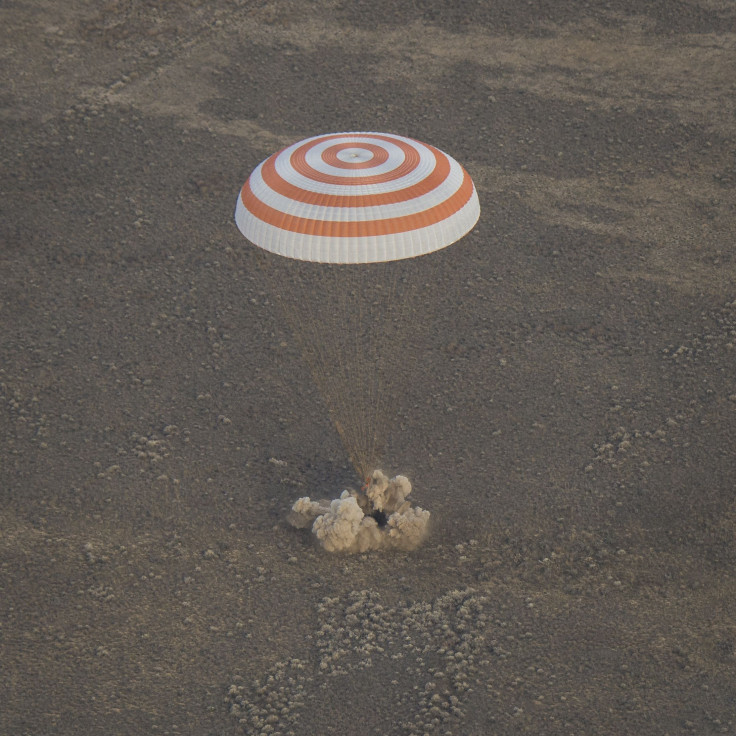Space Station Expedition 49 Soyuz Capsule Makes Safe Landing On Earth, Expedition 50 Starts

Astronauts from Expedition 49 of the International Space Station returned to Earth midnight Saturday in the first upgraded Soyuz MS-01 spacecraft to have gone to ISS. This also means Expedition 50 is now officially underway aboard the space station.
Kate Rubins of NASA, Anatoly Ivanishin of Russia’s Roscosmos and Takuya Onishi from Japan Aerospace Exploration Agency landed in Kazakhstan at 8:58 a.m. local time Sunday (11:58 p.m. EDT Saturday) after spending 115 days in space.
All three Expedition 49 crew members exit Soyuz spacecraft. https://t.co/C7LVQGQ6Xn pic.twitter.com/40QqxpBIcj
— International Space Station (@Space_Station) October 30, 2016
The Soyuz spacecraft undocked from the ISS at 8:35 p.m. EDT. It undertook a deorbit burn that lasted 4 minutes and 37 seconds to start its descent to Earth, and split into three modules 140 kilometers (87 miles) above the planet’s surface before entering the atmosphere.
While the plains in Kazakhstan where the descent module landed had temperatures close to freezing point, the heat shield covering the module experienced temperatures of about 2,500 degrees as it fell through the atmosphere, the friction generating intense heat. The speed of descent is slowed down by using parachutes.
Soyuz parachutes commanded to open. Search and rescue vehicles on way to Kazakhstan landing site. https://t.co/C7LVQGQ6Xn pic.twitter.com/CKFHdDpYXZ
— International Space Station (@Space_Station) October 30, 2016
As soon as the spacecraft left ISS, Expedition 50 officially began under the command of NASA’s Shane Kimbrough. He is currently stationed there with Sergey Ryzhikov and Andrey Borisenko of Roscosmos, and the three astronauts will be joined by three others — Peggy Whitson of NASA, Thomas Pesquet of European Space Agency and Oleg Novitskiy of Roscosmos — who will arrive there in another three weeks. They are scheduled to launch Nov. 17 from Baikonur, Kazakhstan.
© Copyright IBTimes 2024. All rights reserved.







